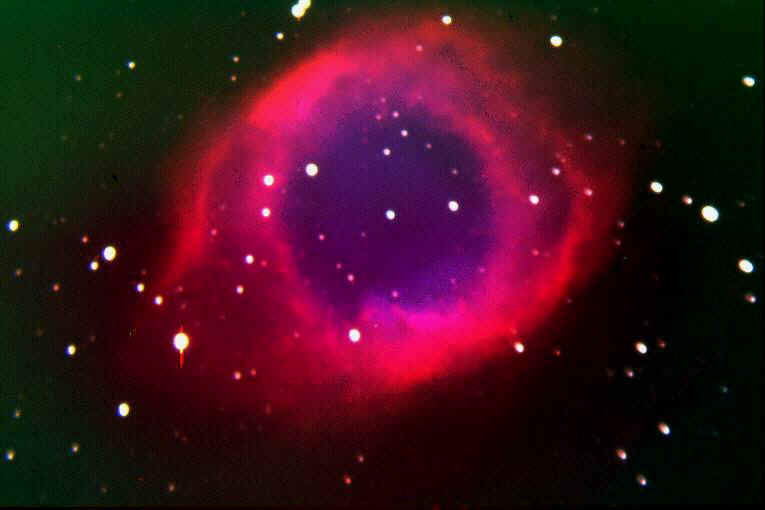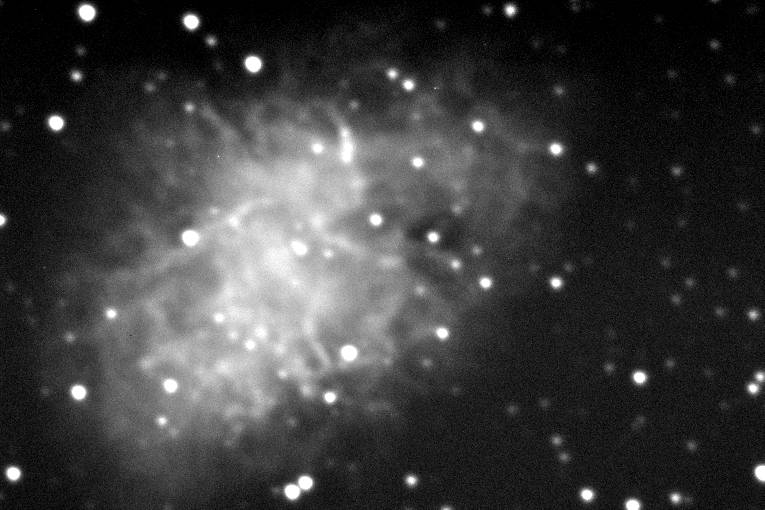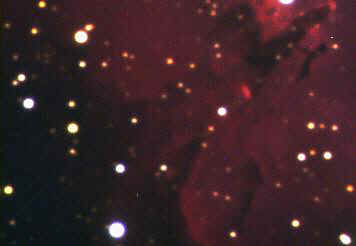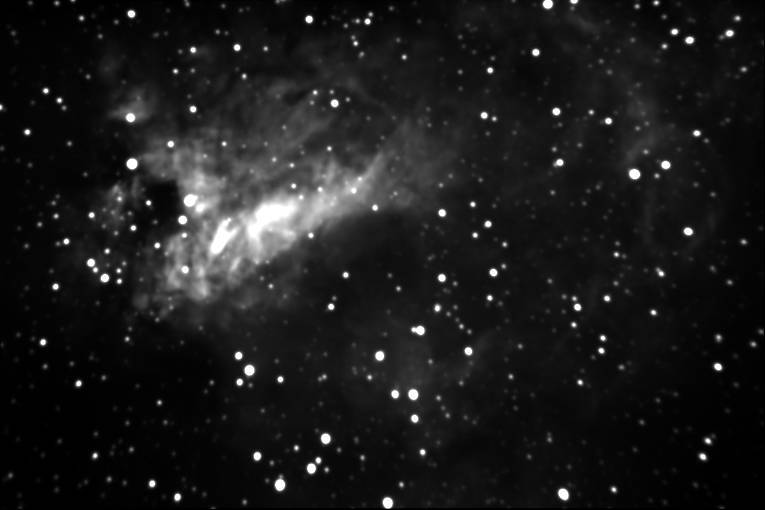
(page 1)
NGC 7293 Helix Nebula 40 minutes at F3.3, RGB image
Located in Constellation Aquarius (the Water-Bearer), this planetary Nebula is 12.8 arc minutes across, with a visual magnitude of 7.3. The central star is magnitude 13.6. It is located a mere 300 light years away, and is the closest supernova remnants nebula to our sun. The surface brightness of the ring is so faint that it is very difficult to see with your eyes through the telescope.

M1 Crab Nebula 15 minutes at F10
Located in Constellation Taurus (the Bull), this supernova explosion remnants was caused by a supernova in 1054 AD which the Chinese recorded observations of for over a year, and was so bright it could be seen in the daytime for several months. Its apparent size is 6 arc minutes by 4 arc minutes, and visual magnitude is 8

M16 Eagle Nebula composite of three 3 minute exposures at F10, binned 2x2, RGB image
Located in Constellation Serpens Cauda (the Snake's Tail), this emission Nebula is 35 arc minutes by 28 arc minutes, with a visual magnitude of 6. It is located 6,500 light years away, and is about 66 by 53 light years in size.

M17 Swan Nebula composite of six 135 second exposures at F3.3
Located in Constellation Sagittarius (the Archer), this emission Nebula is 20 arc minutes by 15 arc minutes, with a visual magnitude of 7. It is located 6,800 light years away.

Copyright © Blueberry Pond Observatory, 1999. All rights
reserved.